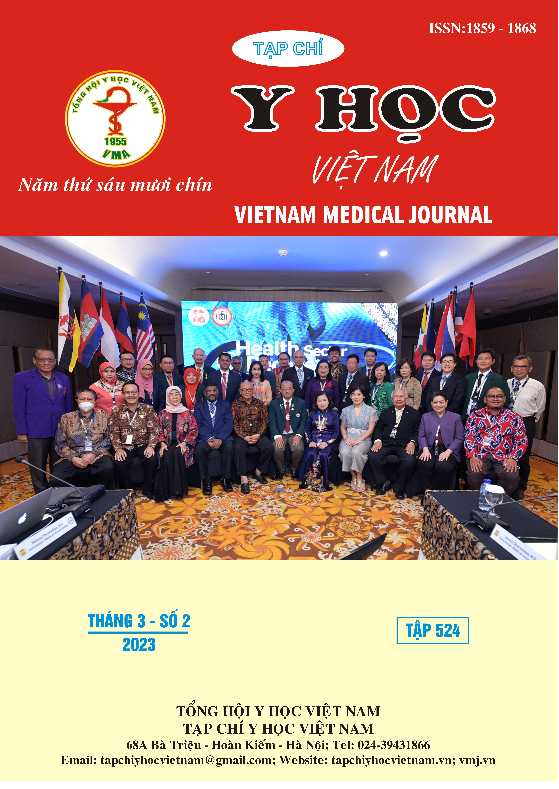EFFECT OF ANISOMETROPIA ON VISUAL FUNCTION IN STUDENTS ATTENDING EYE EXAMINATION AT NGHE AN EYE HOSPITAL
Main Article Content
Abstract
Objectives: Evaluation of the influence of anisometropia on visual function in students. Subjects and methods: Prospective corelation study, 100 patients with refractive errors in school age from 6-17 years old , examination with anisometropia at Nghe An Eye Hospital from March 2022 to August 2022. Results: There was no difference in distance vision without glasses of the group of patients with anisometropia < 1D and the group of patients with anisometropia > 1D. However, the group of patients with anisometropia >1D had lower maximum corrected visual acuity than the group of patients without anisometropia <1D. 18% of patients showed abnormality when maximally adjusted. The prevalence of amblyopia did not differ between men and women. However, there is a difference between age groups: Primary school age has the highest rate of amblyopia. The rate of amblyopia in the group with 1 correct eye is much higher than in the other groups. There was a difference in the rate of amblyopia between the groups with refractive error < 1D and difference > 1D. There are 6 patients indicated for blindfold treatment (6%). All patients with accompanying indications were to treat amblyopia, accounting for 33.33% of total amblyopia patients.
Article Details
Keywords
Anisometropia, refractive errors, amblyopia.
References
2. Tong L., Chan Y.-H., Gazzard G., et al. (2006). Longitudinal study of anisometropia in Singaporean school children. Invest Ophthalmol Vis Sci, 47(8), 3247–3252.
3. Deng L. and Gwiazda J.E. (2012). Anisometropia in Children from Infancy to 15 Years. Invest Ophthalmol Vis Sci, 53(7), 3782–3787.
4. Afsari S., Rose K.A., Gole G.A., et al. (2013). Prevalence of anisometropia and its association with refractive error and amblyopia in preschool children. Br J Ophthalmol, 97(9), 1095–1099.
5. Themes U.F.O. (2016). Theory and Practice of Spectacle Correction of Aniseikonia. Ento Key, , accessed: 02/16/2022.
6. Somer D., Budak K., Demirci S., et al. (2002). Against-the-rule (ATR) astigmatism as a predicting factor for the outcome of amblyopia treatment. Am J Ophthalmol, 133(6), 741–745.
7. Toma ç S. and Birdal E. (2001). Effects of Anisometropia on Binocularity. Journal of Pediatric Ophthalmology & Strabismus, 38(1), 27–33.
8. Nguyễn Thanh Vân (2012), Nghiên cứu đặc điểm lâm sàng và kết quả điều trị nhược thị do tật khúc xạ ở trẻ em, Luận án tiến sỹ y học, Trường Đại học Y Hà Nội.


